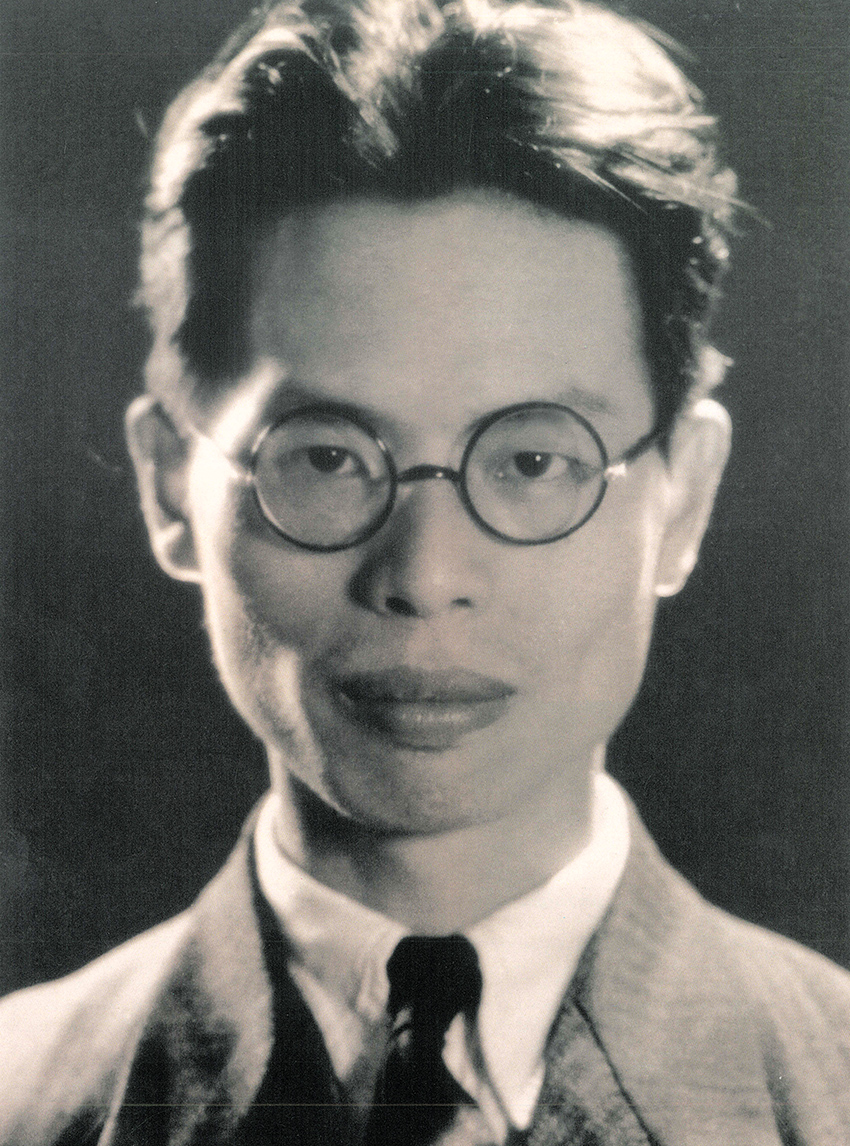
Wu Da-Yu 1903 - 1988
Jiangsu.China
Click here to download full CV
Biography
"The strength of human civilization lies in a blend of wisdom and moral integrity.
It demands leaping forward incessantly, flying, raising the dignity of all, and breaking through the darkness of obsolescence.
It demands light, the beauty of life, and limitless good.
Those who study art should maintain a belief in beautifying humanity, hold fast to this principle forever."
——Wu Da-Yu, A Letter to My Classmates upon Graduation
Wu Da-Yu studied in France in the mid 1920s, and was one of the first artists to participate in the Chinese Government's Diligent Work-Frugal Study Movement. After returning home and taking a teaching job, Wu, along with Lin Fengmin, Pan Tianshou and others, revolutionized modern Chinese art. Lin Fengmin praised Wu as “a painter with an outstanding sense of color and enormous creativity.” Wu's paintings are not limited by representation, as his brushwork is natural and unrestrained, his colors are bright and lyrical, and overall, his paintings are very abstract. Besides occupying an important position in art history, Wu influenced many second-generation artists, such as his students Wu Guanzhong, Zao Wou-Ki, and Chu Teh-Chun, who blended influences from the East and West in their works. While traveling in France, Wu admired the work of Paul Cézanne, and studied in the studios of sculptor Antoine Bourdelle and the originator of Cubism George Braque. During this period, he gained a foundation in form and composition and was deeply influenced by Late-Impressionism and early Modernism. In the 1940s, Wu became interested in Eastern philosophy, studying the writings of Laozi and Zhuangzi. He eventually synthesized all he had seen and heard during his early years in France with concepts from Chinese philosophy, poetry, calligraphy and painting to establish an expansive and profound theory which he called the “dynamism.” Wu said, “What is revealed to the human eye can only be obscure dynamism. The beauty of this dynamism is pure and clear, formless and immaterial, yet not to be overlooked.” His paintings can be linked to the spirit of the Eastern tradition, as Eastern abstraction relies on mental imagery that serves as an intermediary between the concrete and abstract. His concept of dynamism links concrete objects and images, and this is what is called “nature” in Chinese philosophy. This, in turn, is Wu's idea of dynamism. Each of Wu's students has relied on individual experience to define dynamism in his own way, thus Wu has had a comprehensive influence on Chinese abstraction from its inception to its ongoing development.
The pursuit of art is solitary. In 1925, Wu renamed himself after the Chinese character “朋”(peng) with two left-falling stroke removed, taking the meaning of “The Great Way has no friends (peng)”. In 1985, Wu suffered from cataracts, and was forced to stop painting. He wrote a poem that has been passed down, “… I am still dreaming, and still chewing on the rhyme of the light. East and West are lost in time, and tears and laughter wake me up in autumn and spring. The white has its own internal barriers, not allowing it to be colored.” The poem shows his earnest attitude towards art. Wu Guanzhong once said, “Wu Da-Yu, who has long ploughed through the desert, will eventually see the splendour of the desert. He will eventually see it because he firmly believes that the death will never come.”
Wu was born in Jiangsu Yixing in 1903. He grew up with a sound foundation in classical Chinese poetry and calligraphy. In 1917, Wu went to Shanghai to study painting with Zhang Yuguang. In 1919, he became the art editor of Shanghai News, thereby becoming one of the youngest members of the Shanghai Manhua Society. Wu joined the Chenguang Art Association in 1921 and published nearly 60 comics in Shanghai News. He went to France in 1922 to study art at École nationale supérieure des Beaux-Arts under the tutelage of Professor Rouge. During his stay in France, he also studied under the renowned French sculptor Bourdelle (1861-1929), and the master of modern painting, Georges Braque (1882-1963). Wu cofounded the Phoebus Society, an overseas art movement of Chinese artist, in Paris with Lin Fengmian, Lin Wenzheng, Li Jinfa, Liu Jipiao, and others, of which he was a leading member. In 1928, he was appointed as the chair of Department of Western Painting at Hangzhou National Academy of Art, committed to cultivating talents and creating contemporary art until 1940. In 1962, his work Red Flower was on view at the 3rd National Art Exhibition and was collected by the National Art Museum of China. In 1979, the oil painting Deluge of Rain was selected for the East Six Province and One City Exhibition, and published in art magazine. In 1984, the work Colorful Grass received an honorary mention in the 6th National Art Exhibition. In 1988, Wu passed away in Shanghai. In 1995, Lin Tien-min, the founder of Lin & Keng Gallery, found the works left behind by Wu in Shanghai, and invited Wu Guanzhong to host “The Art of Wu Da-Yu” seminar at the International Art Institute in Beijing in 1996. Since then, it has drawn the attention of the art world to Wu Da-Yu and Chinese modern artists, and has successfully brought Wu into the public eye as a real star discovered.
Exhibitions
Transcendence from Afar- Oriental Abstract Painting and the Tradition of Creating Ekaggatā 2023 │ 03.11 - 04.22
Lin & Lin Gallery
First Generation Chinese Oil Painting Pioneering|Wu Da-Yu 2001 │ 03.09 - 04.08
Lin & Keng Gallery.Beijing
Publications








































